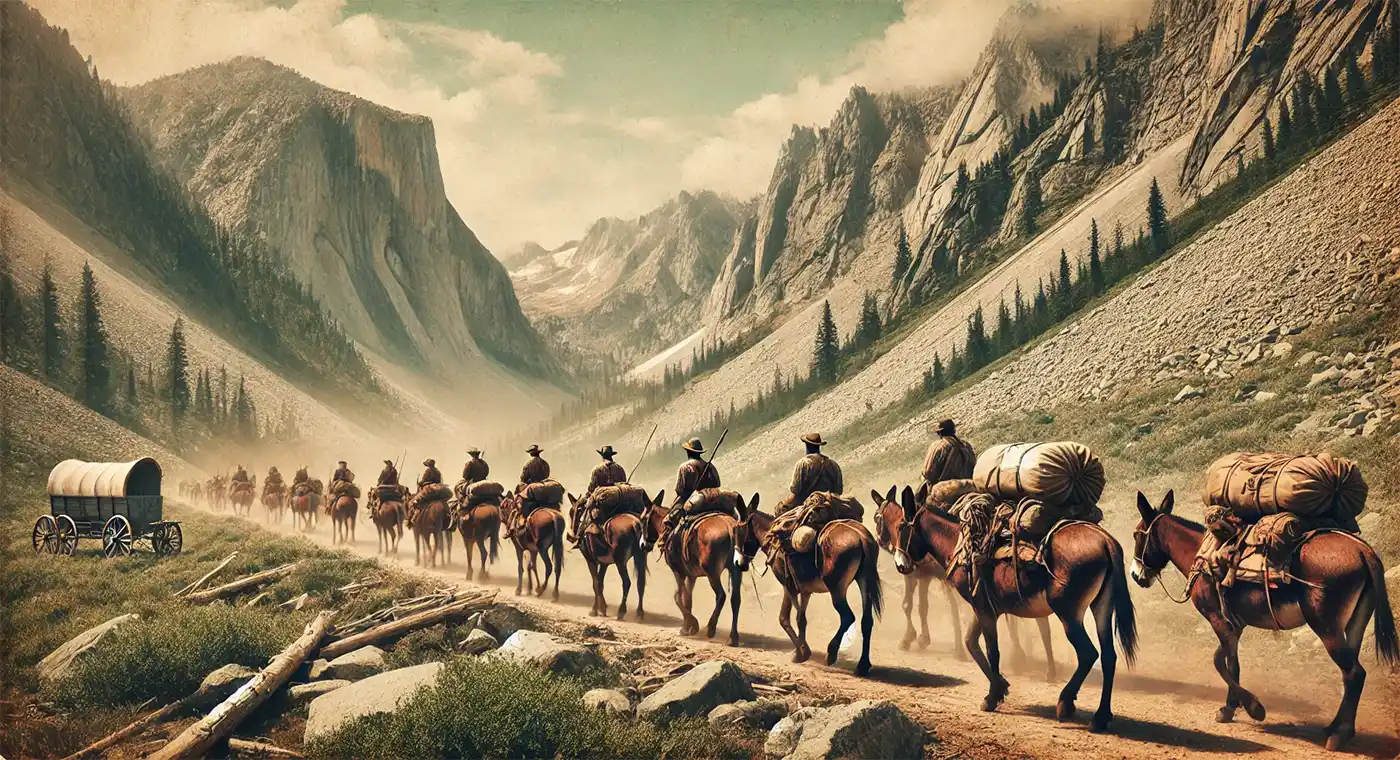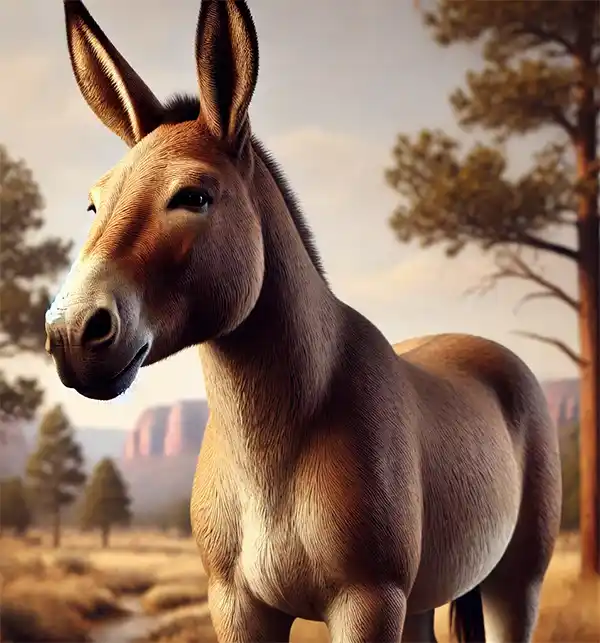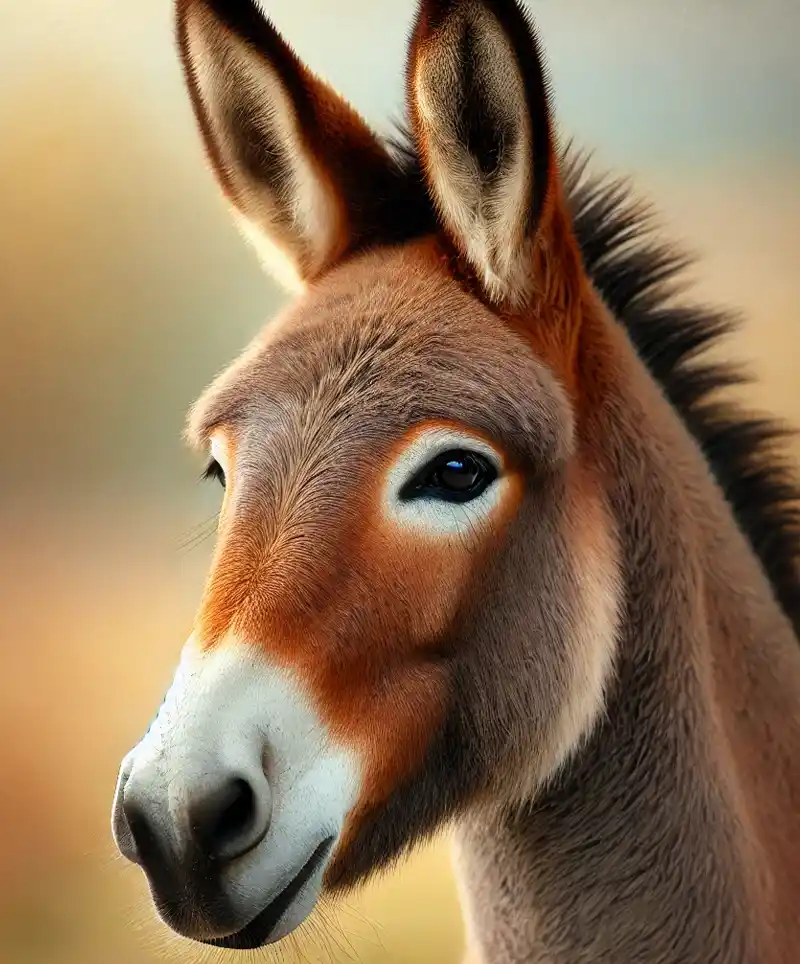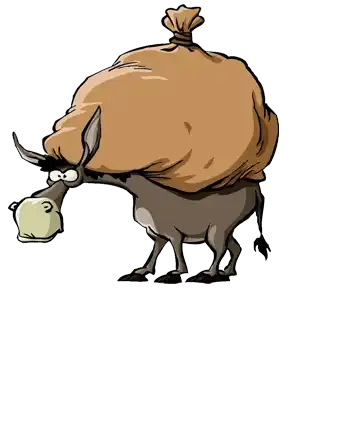A Day to Appreciate the Strong, Stubborn, and Surprisingly Clever Mule
October 26th is National Mule Day, a day to celebrate the workhorses of the animal world – literally. Mules, those half-donkey, half-horse marvels of muscle and mind, have been hauling, trekking, and steadfastly working alongside humans for thousands of years. They’re known for their legendary strength, intelligence, and, yes, their “stubborn” streak. But before we label them stubborn, let’s dive into the world of the mule to understand why they’re not just standing around; they’re carefully considering every step!
What Exactly is a Mule?
First things first – what exactly is a mule? Mules are the hybrid offspring of a male donkey (or jack) and a female horse (mare), combining the best (and sometimes quirkiest) qualities of both parents. This crossbreeding gives mules unique physical and mental traits that set them apart. From their donkey parent, mules inherit hardiness, caution, and a surprising knack for self-preservation – they’re not about to dive headfirst into a tricky situation. From their horse parent, mules gain size, strength, and an impressive work ethic that lets them power through tough tasks that would leave others lagging.
But their genetic uniqueness doesn’t stop there. Thanks to their “hybrid vigor,” mules are known for greater stamina, intelligence, and resilience than either horses or donkeys alone. This means they’re built for endurance, making them perfect for long, grueling days in the field or on the trail. And while they’re strong and smart, don’t expect them to make little mules – mules are almost always sterile, so they won’t be starting any mule family reunions.
So, while they may have the ears of a donkey, the size of a horse, and a personality all their own, mules are more than just a blend of their parents. They’re a perfectly balanced mix of toughness, strength, and just a dash of stubbornness, making them the animal kingdom’s hardiest and most reliable work partners.

The Tale of the Stubborn Mule
Mules have a reputation for being stubborn, but mule enthusiasts (yes, they’re out there) will tell you that’s just a misunderstanding. What’s often mistaken for stubbornness is really just a high level of self-preservation and an impressive sense of awareness. Mules are smarter than they look – they know when a path is too rocky, too steep, or too dangerous, and they’re not about to risk life and limb just because we’re in a hurry. If they smell danger, they’re going to stop and assess the situation rather than plow ahead recklessly.
Think of it this way: a horse might barrel headfirst into danger, trusting the rider to know best, but a mule will stop, take a hard look, and decide if the plan really makes sense. They have a strong survival instinct and an independent mind, both of which have kept them safe (and in the workforce) for centuries. In fact, it’s said that a mule has enough self-respect to only do what it deems reasonable. They can sniff out unstable footing or sense if they’re carrying too much weight – and if they are, they’ll simply stop and wait until things are right again.
Some might call that “stubborn,” but mule handlers call it “thinking for themselves.” In the end, they’re not being difficult; they’re simply exercising the good judgment that makes them so reliable.
A Long History of Helping Humanity
Mules have been pulling carts, carrying packs, and working in the fields for thousands of years. From the rugged mountains of Afghanistan to the Appalachian trails, mules have proven their mettle in terrains and climates that would leave lesser animals calling it quits. During the American Civil War, mules were essential in transporting supplies, and even today, mules are used in some of the world’s most challenging environments, where trucks or machines just can’t go.
 They’ve even been known to keep predators at bay. Farmers often use mules to protect livestock, as they are fearless when it comes to warding off potential threats. Wolves and coyotes don’t stand much of a chance against a mule’s swift kick and unflinching bravery – who knew they were as fierce as they are funny?
They’ve even been known to keep predators at bay. Farmers often use mules to protect livestock, as they are fearless when it comes to warding off potential threats. Wolves and coyotes don’t stand much of a chance against a mule’s swift kick and unflinching bravery – who knew they were as fierce as they are funny?
A Mule’s Work Ethic
If you’re looking for a dedicated worker, look no further than the mule. They’ll happily pull a plow, carry heavy loads, and keep going longer than most other pack animals. But here’s the catch: you can’t boss a mule around. You can’t rush them, cajole them, or sweet-talk them into anything they don’t want to do. It’s part of their charm – a mule has its own mind, and if they’re going to work hard, it’s on their terms.
This independence is also what makes them such excellent partners on tough journeys. A mule won’t overexert itself to the point of exhaustion – it knows when to stop and take a break. This self-preserving nature, combined with their strength, means they can outwork even the most willing horse or donkey when it comes to long hauls.
How to Honor Our Hooved Heroes
On National Mule Day, we celebrate not just the hard work that mules do, but their quirky, intelligent personalities and the enduring partnership between mules and humans. Here are a few ways to show your appreciation:
-
Visit a mule farm or sanctuary – These places do wonderful work in giving retired mules a happy, peaceful life, and they often love having visitors.
-
Take a mule ride – Some ranches offer mule rides, and it’s a chance to appreciate their sure-footedness up close.
-
Read up on their history – From the battlefields to the mountain trails, mules have stories as long as they are inspiring.
-
Watch a Western – Let’s face it: no cowboy movie is complete without a stubborn mule stealing the show.
Mules may not be as glamorous as horses, but they’ve more than earned their place as a beloved and indispensable part of the working animal world. They’re symbols of strength, resilience, and a down-to-earth sense of humor that’s surprisingly endearing. So on National Mule Day, let’s give a nod to these hardworking, steadfast creatures who’ve been carrying the load (literally) for centuries.
So, next time you see a mule standing stoically on the trail, give them a little respect. They’re not just standing there – they’re thinking. And they probably know something you don’t.
Please Share our Content







 They’ve even been known to keep predators at bay. Farmers often use mules to protect livestock, as they are fearless when it comes to warding off potential threats. Wolves and coyotes don’t stand much of a chance against a mule’s swift kick and unflinching bravery – who knew they were as fierce as they are funny?
They’ve even been known to keep predators at bay. Farmers often use mules to protect livestock, as they are fearless when it comes to warding off potential threats. Wolves and coyotes don’t stand much of a chance against a mule’s swift kick and unflinching bravery – who knew they were as fierce as they are funny?







 "Sláinte!" is a traditional Irish expression used as a toast, equivalent to "Cheers!" in English.
"Sláinte!" is a traditional Irish expression used as a toast, equivalent to "Cheers!" in English.